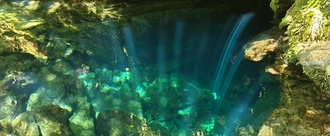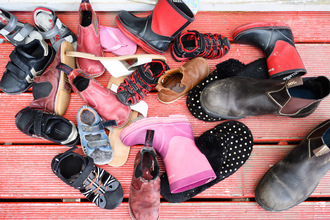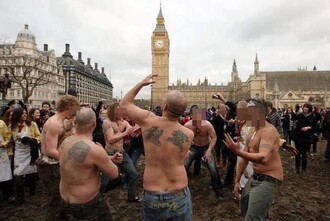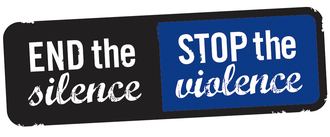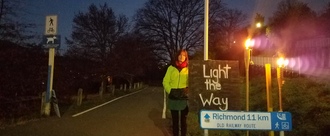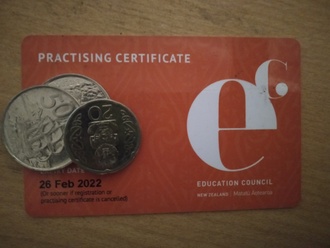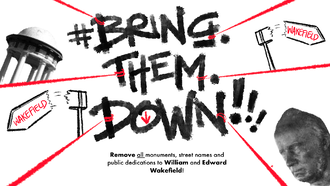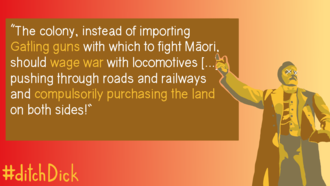-
Incentivise NZ farmers to diversify for longevitySupporting our farmers to diversify into cropping and horticulture is going to be good for everyone, as well as good for the planet. What is needed are financial incentives, retraining opportunities and help in finding the right crop to grow on the land. Many of our businesses would love to be 100% Kiwi sourced, but due to being unable to buy the required plant proteins in enough quantity here in NZ, they are sourcing abroad. Kiwi farmers don't want to be left behind in the global market. The export potential for our horticulture products is huge too. We have everything to gain by transitioning to a more balanced and sustainable economy. According to an Otago University paper a wholefoods plant diet could bring carbon emissions savings of up to 42%, confer a population gain of up to 1.5 million quality-adjusted life-years, and save our health care system up to $20 billion. The nation's health and wellbeing depend on our ability to be sustainable and self-sufficient, but our farmers can only do the right thing if they are supported to do so. Government funded think tanks could help an individual farmer choose the best crop(s) for their land, work out how much land can be used for horticultural purposes and help direct a timeline for transition. Let's make this really easy. 🌱 Our Green Protein Report provides suggestions for how we can reduce emissions, detailed reasons why this needs to happen and the benefits to our society by doing so. Copies are available on request and a PDF is available for download here: https://vegansociety.org.nz/wp-content/uploads/2021/03/Green-Protein-Revolution-Report-2020-2.pdf This petition is supported by 🌏 A Guide to Vegan 🌏 Animals Aotearoa 🌏 Better Futures Forum 🌏 Deavoll Construction Limited 🌏 Evidence Based Eating 🌏 Fitness Locker 🌏 Greenpeace NZ 🌏 Kaiaroha Vegan Deli and Eatery 🌏 Lorax Group Limited 🌏 Mylk Made 🌏 New Zealand Anti Vivisection Society 🌏 New Zealand Vegetarian Society 🌏 Plant Based NZ Health Trust 🌏 SAFE 🌏 Tanglewood Foundation 🌏 The Lentil Intervention 🌏 The Plant Based Treaty 🌏 Ulenberg Eco-Architects Ltd 🌏 V & V 🌏 Vegan Society Aotearoa 🌏Vice Cream Limited 🌏 Welligton Vegan Actions2,105 of 3,000 SignaturesCreated by Vegan Society

-
Save Auckland's Marine Reserves and WaterwaysYour support is urgently required as the Auckland Council will soon make decisions to cut funding for programmes that are designed to improve sediment and contaminant control in our waterways. A Sediment Programme is vital for our marine reserves and coastal waterways, however, the Chief Planning Office advises the planned Sediment Programme may be reduced due to a lack of budget. The Auckland Council Emergency Budget proposes reducing the programmes of the Healthy Waters Department and the Chief Planning Office. The budget cut will jeopardise Council’s ability to meet and support its obligations required by the National Policy Statement for Freshwater Management (NPSFM), as it will negatively affect the Council’s ability to manage how much sediment and pollution is released into the Hauraki Gulf. This will affect the programme’s next step to improve sediment controls on large-scale greenfield developments and improve transparency between compliance performance and iwi / community expectations of water quality. This will have devastating consequences on the health of the Long Bay Okura Marine Reserve and other important estuaries and waterways around the Auckland Region, that are affected by the sediment from coastal development. Your support is urgently required as the Auckland Council will soon make decisions to cut funding for programmes that are designed to improve sediment and contaminant control in our waterways. The future of our waterways depends on action, please sign this petition to show your support. State of the Gulf: Auckland Council report finds estuaries choking in sediment, shellfish dying, June 2020 https://www.nzherald.co.nz/nz/news/article.cfm?c_id=1&objectid=12342221&fbclid=IwAR3yYpTDHB8QKcaqk2G2vrtEDDtvDGb3sBBYVlWEEXNp9szNuYBk05DF_lg568 of 600 SignaturesCreated by Teresa Moore
-
End Systemic Racism in New Zealand SchoolsThe education system's purpose should be to nurture and support children, unfortunately this is not the case. Not all children are treated equally in our current system. Countless children have experienced racial abuse in the New Zealand education system, this disturbing problem has persisted for decades with little to no improvement. The effects of racial abuse on children has been well documented in academic literature. The Ministry of Education has been negligent in their response to the problem and have failed to protect vulnerable children from racial abuse. https://www.renews.co.nz/endless-stories-of-racism-in-nz-schools/ Testimonies of racial abuse victims will be included with this petition. Testimonies of racial abuse can be emailed to [email protected] or @ngati_frybread on Instagram. If you sign this petition please also consider to writing your local MP with your thoughts on this kaupapa. https://www.parliament.nz/en/mps-and-electorates/members-of-parliament/ We can make change, ngā mihi!4,969 of 5,000 SignaturesCreated by Ngati Frybread
-
BAN LANDFILLS NEAR WATERWAYSWe believe that water is the most precious resource our country has and that landfills pose a significant threat to our water quality. We believe there are alternative locations and technologies. Waste buried in landfills can include plastics and potentially hazardous and toxic materials which could devastate waterways, rivers and harbours, the animals that inhabit them, and the people that rely on them. Would you drink water from an aquifer under a landfill or eat fish from a contaminated harbour? Protect our water from landfills. This petition will be used as part of a presentation to be made in front of the Environment Select Committee to ban landfills near waterways in New Zealand. This is part of a campaign by Fight the Tip, Tiaki te Whenua Incorporated. Join our group: https://www.facebook.com/groups/SavetheDome/395 of 400 SignaturesCreated by Michelle Carmichael
-
Respect and value ECE teachers - stop Evolve’s exploitative contracts!Teachers in one of our biggest early childhood corporations are fighting a new contract that could cut their guaranteed hours and income by 50%. Please stand up and support them! In one of the worst examples of how broken New Zealand’s early childhood education system is, Evolve Education – which continued to get full government funding through the Covid-19 lockdown and got millions in wage subsidies – is asking hundreds of teachers to sign new contracts guaranteeing them just 20 hours of work a week. What’s worse, Evolve would require them to be available for a further 20 hours a week - with no compensation for this availability and no chance to earn an income elsewhere. This is unfair and unlawful Evolve owns Lollipops, Active Explorers, Learning Adventures, Pascals, Little Earth, Little Lights and Little Wonders. This contract would impact on the quality of teaching and consistency of relationships with thousands of young children. Many teachers in Evolve are refusing to sign the contracts – but we need your support. We want to stop this now before it leads to further diminishing of quality teaching and working conditions across the whole ECE sector. We are taking a stand to protect the quality of teaching and learning for children, and to protect basic working conditions for all ECE teachers. And we’re angry that in spite of increased Government funding for ECE services in May’s Budget, there’s still a pay gap of more than 24% between ECE teachers and our colleagues in kindergarten and schools. Sign this petition asking the Government to step in urgently to stop the new Evolve contracts and to change the system to protect children and teachers everywhere.5,765 of 6,000 SignaturesCreated by Virginia Oakly
-
Remove 'Waitangi Day' from the Waitangi Day Circle Line Pub Crawl event name & cancel the drunk HakaThis is important because the inclusion of Waitangi Day in the pub crawl title enables and perpetuates the dishonouring of Te Tiriti o Waitangi and is culturally insensitive. It also provides (and has done so on many accounts) an opportunity for intoxicated pub-crawl-goers to try to perform the Haka while wasted. The Pub Crawl (that has been going for 37 years) encourages New Zealanders in the UK to drink a lot of alcohol and 'celebrate' Waitangi Day by dressing up as 'kiwi icons' (eg. beer brands and marmite) and hop from one British Pub to another. As well as this, photographs have long-ago emerged of people trying to imitate traditional Māori Korowai, Tipare and drawn-on Moko Kauae poking out tongues and attempting pukana. Does this enhance mana? Does this contribute to British & European people seeing Haka performed incorrectly in London and therefore enables more terrible 'performances' of Ka Mate and Tika Tonu? Does the use of Waitangi Day by a non-Māori lead organisation and community respect the pain, loss and struggle Māori people have endured and still fight for when it comes to Te Tiriti and the reclamation of land, reo and culture? Related links: The Spinoff Article - There's something off about the Waitangi Day Pub Crawl by Madeleine Chapman https://thespinoff.co.nz/atea/06-02-2019/theres-something-off-about-the-london-waitangi-day-pub-crawl/ NZ Herald Article - Pleas for drunk Kiwis to abstain from haka during London Waitangi Day Pub Crawl by Michael Neilson https://www.nzherald.co.nz/nz/news/article.cfm?c_id=1&objectid=12305813 Te Ao Tapatahi Interview with Creator of Petition - Ashley Clark https://www.facebook.com/watch/?v=2957233182201501,424 of 2,000 SignaturesCreated by Ashley Clark
-
End Teen ViolenceOur aim is to raise awareness, educate children in schools and talk about this issue so that we can provide help for those who have experienced or are going through violence, and hopefully prevent it too. We believe that this issue needs to be talked and normalised in conversations at schools because this issue is prevalent, and is hurting our youth. Violence is rooted from several factors, such as systematic poverty, family issues, experiencing violence at home and many more. Research shows that teen violence is more prevalent in Maori and Pasifika youth. Although the numbers have decreased, the seriousness of the offences still remain high. "...the reduction in offending rates for European and other ethnicities far outstripped young Pasifika and Maori, who dropped by 61% and 59%...Youth offending in the European/other category fell by 74%". [https://www.newshub.co.nz/home/new-zealand/2018/04/youth-crime-rates-decline.html] For many of us it affects us personally where families have lost their children to teen violence190 of 200 SignaturesCreated by End Teen Violence
-
Light the Way 2020 (Railway Reserve, Nelson)We believe that this thoroughfare is a vital part of the Nelson commuter network for cyclists, pedestrians and skateboarders, as well as a very popular local route for Nelson south residents, dog walkers and runners. Long distance cyclists typically use this route also. By lighting the way we hope this route will become safer and more appealing for movement outside of daylight hours, particularly in the winter, giving us more choice to move around our city without motor vehicles, and to recreate more safely in our local neighbourhood.212 of 300 SignaturesCreated by Ange Palmer
-
The Teaching Council must be reviewedThe purpose of the Teaching Council is to ensure safe and high-quality leadership, teaching and learning for children and young people in early childhood, primary and senior secondary schooling in English medium and Maori medium settings through raising the status of the profession. Over 30,000 people called on the Teaching Council to review their decision to raise registration fees.[1]. Teachers who were unhappy with the decision and the communication from the Teaching Council include people who teach at early childhood, primary and secondary and include part-time and assistant teachers. The petition was delivered to Lesley Hoskin and the Teaching Council on 10 June 2020. A resolution has not been achieved so we now seek action with the Minister of Education. We believe the Teaching Council does not represent teachers' best interests. Teachers have lost trust and confidence (as highlighted by the PPTA 95% vote of no confidence).[2] The Teaching Council's duties need to be independently examined to determine whether they support and work for teachers. The review should include a review of its expenses and the level of registration fees charged to teachers. This is why we're calling on the Minister of Education Chris Hipkins to launch a review into the Teaching Council on behalf of the teaching sector. Sign now to join the call. This petition is led by teachers. References: 1. Say no to doubling teacher registration fees, OurActionStation https://our.actionstation.org.nz/petitions/fight-against-doubling-to-teacher-registration-fees 2. Teachers vote no confidence in Teaching Council over fee increase, RNZ, June 2020 https://www.rnz.co.nz/news/national/418585/teachers-vote-no-confidence-in-teaching-council-over-fee-increase11,077 of 15,000 SignaturesCreated by Anna Hamilton
-
Please speak up on Israel's Annexation of Palestinian LandNew Zealand has been silent for six months as Israeli Prime Minister Netanyahu has been preparing a blatant breach of international law in his proposed annexation of vast swathes of Palestinian land in the Occupied Palestinian Territories. The previous National-led government co-sponsored United Nations Security Council resolution 2334 in December 2016 which said Israel’s settlement building on occupied Palestinian land constituted a "flagrant violation" of international law and had "no legal validity". It demanded Israel stop such activity and fulfil its obligations under the Fourth Geneva Convention. However, this Labour-led coalition government has been deafeningly silent while Israel not only continues buildings illegal settlements but now intends to steal the land itself. The issues of Annexation are covered in this excellent Fact Sheet from APAN in Australia - https://apanaustralia.files.wordpress.com/2020/04/annexation.pdf People around the world, including in Israel, are speaking up while New Zealand stays silent: * Israel - Huge Jewish-Arab Rally in Tel Aviv Decries Netanyahu's Plan to Annex 1/3 of West Bank - https://www.commondreams.org/views/2020/06/07/palestinian-lives-matter-huge-jewish-arab-rally-tel-aviv-decries-netanyahus-plan * Israel - It might not take much effort to derail Netanyahu’s annexation plan - https://www.middleeastmonitor.com/20200609-it-might-not-take-much-effort-to-derail-netanyahus-annexation-plan/ * Britain - Israel's West Bank plans condemned by leading British Jewish figures - https://www.theguardian.com/world/2020/jun/05/israel-west-bank-annexation-plans-condemned-leading-british-jews * America - As Netanyahu moves closer to annexation, pressure builds in DC to stop him - https://www.timesofisrael.com/as-netanyahu-moves-closer-to-annexation-pressure-builds-in-dc-to-stop-him/ * Global - 100 law experts warn against Israel’s annexation of West Bank - https://english.alresalah.ps/new/post.php?id=6810237 of 300 SignaturesCreated by Neil Scott

-
#BringThemDown - William and Edward Wakefield monuments, street names and public dedications.Edward and William Wakefield were imprisoned for three years in England for abducting a 15 year-old girl. Edward established and William led the New Zealand Company which swindled land out of Māori hands and promoted the systematic colonisation of Aotearoa. Currently, there is a bronze bust of Edward Wakefield at Mt Victoria, a concrete structure at the Basin Reserve dedicated to William Wakefield, Wakefield Street, and other public dedications. We must stop elevating colonial narratives like these because in doing so, we condone them. We must elevate the kōrero of tangata whenua. These must be removed. Further reading: [1] https://i.stuff.co.nz/national/politics/opinion/121823266/racism-monuments-and-ethical-remembering [2] https://nzhistory.govt.nz/people/edward-wakefield [3] https://nzhistory.govt.nz/people/william-wakefield [4] https://www.stuff.co.nz/national/121812546/two-monuments-to-sexual-predators-and-colonisers-could-be-scrapped-in-wellington [5] https://www.stuff.co.nz/dominion-post/news/wellington/111973644/wellington-places-named-after-controversial-historical-figures-could-be-renamed [6] https://www.tvnz.co.nz/one-news/new-zealand/new-zealands-colonial-statues-engulfed-in-controversy?fbclid=IwAR2mPikxToRhr2orN89s5bwCNeoGWfPHRAj9m-ZoK8q4C0O_dDD01754OJ0 [7] https://www.rnz.co.nz/news/national/418937/controversy-over-nz-colonial-statues-long-standing [8] https://youtu.be/iwclRJ2VC6A1,800 of 2,000 SignaturesCreated by Te Matahiapo Safari Hynes

-
Remove the Statue of Dick Seddon from Parliament Lawn“A nation reveals itself not only by the men it produces but also by the men it honours, the men it remembers.” - John F. Kennedy #DitchDick is a campaign petitioning the New Zealand government to remove and replace the statute of Richard “King Dick” Seddon which currently stands in front of the New Zealand Parliament Buildings. Dick Seddon was an established and notorious autocrat, imperialist and racist, and his beliefs are totally incompatible with the values of Aotearoa New Zealand as a just and modern nation. Seddon actively opposed the enfranchisement of women, supported racist policy against Chinese people, supported widespread confiscations and coercive purchase of Māori land and attempted to invade and annex the Pacific nations of Fiji, Sāmoa and the Cook Islands, succeeding in the latter. We call upon the government to relegate Richard Seddon to the history books and no longer honour him with pride of place in front of the highest legislative body in the nation. Seddon’s abhorrent words and deeds have no place in modern New Zealand, and there are many other great Kiwis who deserve the coveted place on Parliament lawn far more than he. References and further reading: -Grimshaw, Patricia. Women's Suffrage in New Zealand. Auckland University Press/Oxford University Press, 1972. xx, 151 pp. -Scott, Dick (1975). Ask That Mountain: The Story of Parihaka. Heinemann. -Burdon, Randal Mathews (1966)."Seddon, Richard John". In McLintock, A.H. (ed.). An Encyclopaedia of New Zealand.453 of 500 SignaturesCreated by Nikau Wi Neera


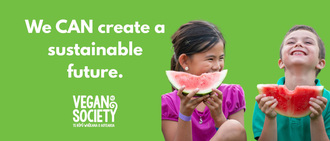
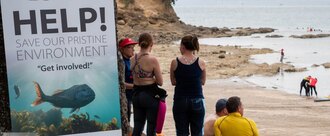
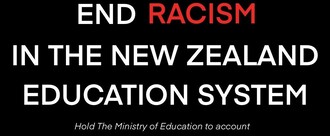.jpg)
